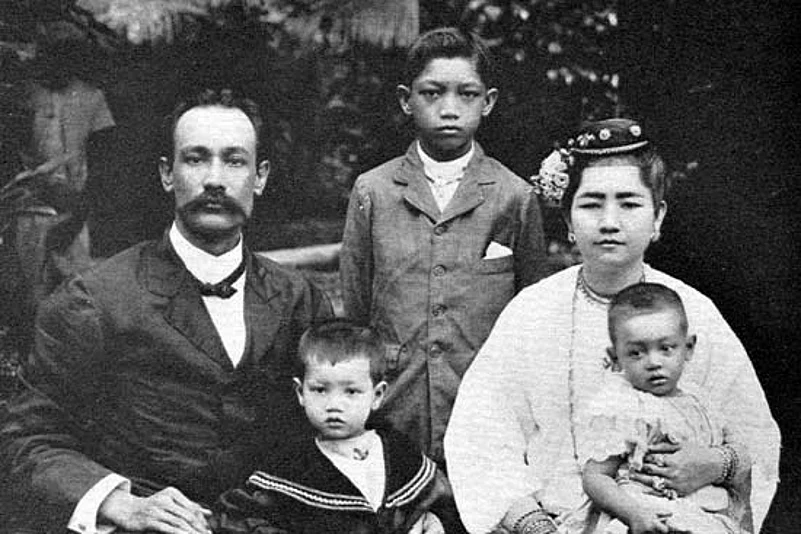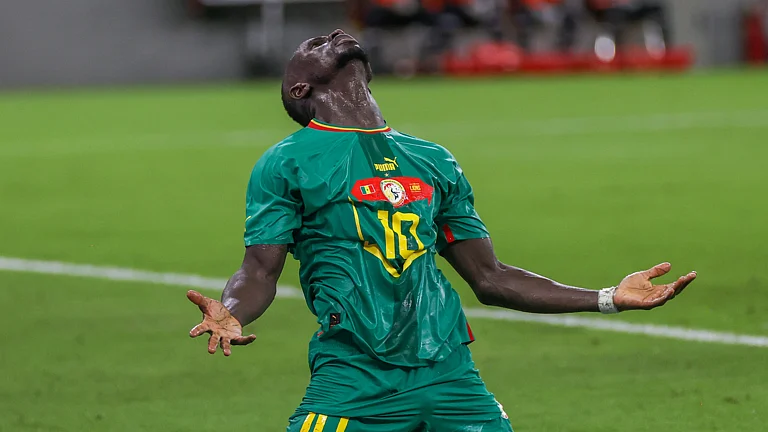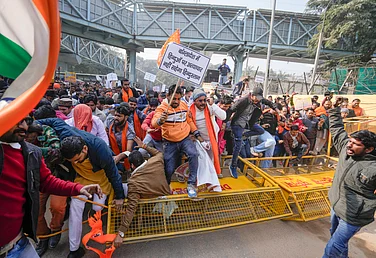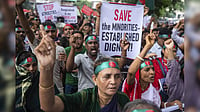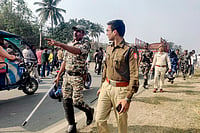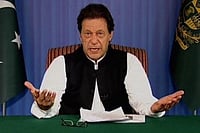It is sometimes hard for us to think of Westerners who lived in India prior to independence as anything other than agents of invasion, conquest, colonialism and imperialism. This is not surprising, given the history of the subcontinent. The spectre of the British Raj still casts an understandably long shadow. But it’s a mistake to assume that every European who came to India before 1947 was a would-be colonialist—or that Westerners who had been arriving to live in India before the East India Company came here were setting the stage for their more powerful descendants.
A large number of foreign migrants to India during the 16th and 17th centuries came not to conquer and command, but with much humbler ambitions: to escape poverty and persecution. Much of Europe, including England, was at this time an economic backwater. Global economic power was still largely concentrated in Asian empires—Ottoman Turkey, Safavid Persia, Mughal Hindustan, Ming and Qing China. The glamour of Eastern power is partly why many less well-off Europeans settled in India.
Most of these poor migrants were simply economic refugees. But some were criminals; some were religious dissidents; some were even what we might call sexual dissidents. Many others had no choice at all in the matter of their migration, having arrived in India as slaves, indentured servants, or possessions of their lords, fathers and husbands. Nearly all of them served an Indian master, and in a way that necessitated submitting to local languages and customs. In the process, these migrants became Indian. They ate Indian food, wore Indian clothes, fought in Indian armies, converted to Indian religions, performed Indian rituals, acquired Indian knowledge, made Indian friends and enemies, fell in love with Indians, and had Indian children.
To become Indian in the 16th and 17th centuries was not to become one monolithic thing. What migrants became depended on their environmental as much as cultural and economic locations. To become Indian in the coconut-rich hinterland of the Konkan coast meant something quite different from what it meant in the typhoon-drenched, mosquito- and tiger-dominated terrain of the Sundarbans or in the arid hills of the Deccan plateau. Likewise, to become Indian in the fakir-congested galis of Ajmer meant something quite different from what it meant in the luxurious havelis of Agra or in the Mughal harem of Lahore. Each location prompted different bodily transformations.
For all their diversity, however, these locations did have one thing in common. To lesser and greater extents, and for different reasons, each were multicultural spaces. The Konkan coast was the home of many religious refugees, including undercover Jews escaping the Inquisition in the Iberian peninsula and Catholics escaping Protestant persecution in England. The Sundarbans provided river and island hideouts to pirate communities comprised of Bengalis, Burmese and Europeans. The Deccan sultanates were ruled by Persian and Turkish elites who brought foreign merchants, physicians and soldiers—including enslaved Ethiopian Africans or Habshis—into cities such as Aurangabad, Ahmednagar and Hyderabad. In addition to installing Persians and Central Asians as courtiers and retaining mercenary soldiers from Europe, the Mughals also welcomed Christian artisans, traders and priests into their main cities—Fatehpur Sikri, Agra, Lahore, Delhi and Ajmer.
Each of these different multicultural spaces asked migrants to cultivate distinctive new bodily skills and habits. Which is to say: these spaces not only offered migrants new homes. They also functioned as engines of bodily transformation. The foreigners who settled in them altered their bodies by eating Indian spices, weathering Indian heat, and succumbing to Indian illnesses. Just as importantly, their bodies were also transformed by the acquisition of new skills specific to the spaces.
Those who joined local armies often brought with them knowledge of how to handle firearms—a new yet devastatingly effective technology introduced to the subcontinent in the 16th century. But they also had to master new bodily techniques: enduring military manoeuvres in the heat and moving efficiently through intimidating terrain such as the rocky highlands of the Deccan, the parched deserts of Rajasthan, or the Ghats of south India. Migrant warrior sailors in Kerala, such as the Malaccan slave Chinali, who joined a rogue Malabari navy and became the scourge of the Portuguese, may have developed sea legs before coming to India. But in their new subcontinental locations, they also had to adapt their bodily reflexes to tropical cyclones, Arabian Sea currents, and the predations of mosquitoes. Foreigners who joined communities of itinerants in Ajmer or Delhi, such as the English eccentric Thomas Coryate, had to train their bodies to perform rituals of prostration, to be satisfied with a meagre diet of rice and dal, and to endure extremes of weather in little or no clothing. And foreign women living in Mughal harems, such as the Armenian Bibi Juliana Firangi and the Portuguese slave-turned-courtier Julenna Dias da Costa, were expected to acquire an ensemble of new bodily techniques—dancing, singing, wearing robes, becoming human chess pieces, even bearing weapons, depending upon their rank and vocation.
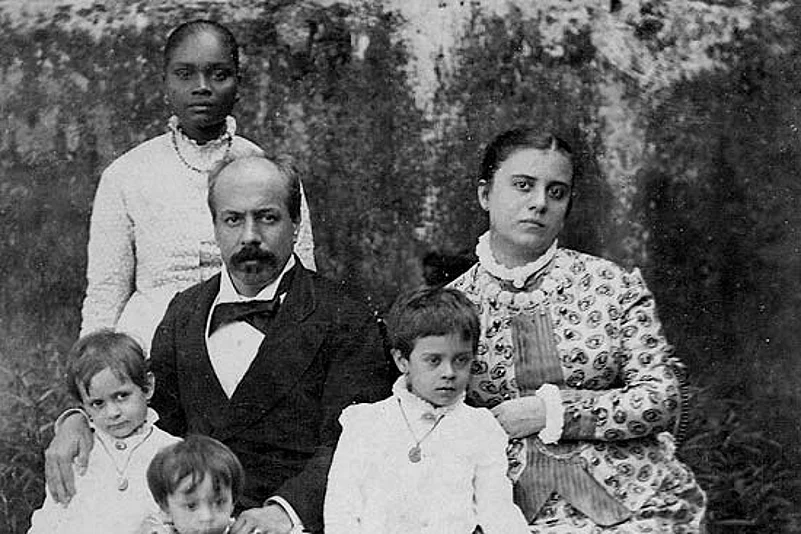
Faraway links A Portuguese family in Bombay, 1880
The migrants were foreign yet not foreign: they came from elsewhere, yet they and their bodies also became Indian. Indeed, unlike other European travellers who returned to their homes, all of them left their bones in the subcontinent. They were embraced as locals. Yet they were still often referred to as outsiders, and in a variety of ways. The most common term for these migrants was firangi, a Persian word derived from the Arabic farenji. The latter was itself a medieval rendering of ‘Frank’ or Frenchman; after all, Franks dominated the ranks of the Christian Crusaders from Europe, a land often known in the subcontinent as Firangistan.
In pre-British Raj India, however, the firangi was not always a European. The term was applied variously to Christian migrants from non-European nations, such as Armenia and Georgia; to migrants who were native Christian converts from Portuguese Asian colonies such as Malacca; and to migrants who were Christian slaves from African territories. And ‘firangi’ was not applied exclusively to Christians. It was used also of Jewish migrants from Christian nations and even of some Muslim migrants who had once served Christian masters.
As this suggests, ‘firangi’ in its pre-Raj currency was something of an indeterminate term. It was not just a generic name for a foreigner. It referred more precisely to a migrant from a Christian land who had become Indian yet continued, in fundamental ways, to be marked as foreign. At times, this liminal status could be a source of discomfort and alienation, not least in locations where the prevailing religious cultures, especially caste Hinduism, valued purity of body and belief. Yet it could also be a spur to extraordinary creativity. A remarkable number migrants from humble backgrounds engaged in innovative thought-experiments—be they scientific, literary, military, artistic, artisanal, architectural or spiritual—that could not have happened anywhere but in India, yet could not have been produced by anyone but a migrant.
Here is a shortlist of such experiments. The Portuguese physician and undercover Jew Garcia da Orta, personal doctor to the Sultan of Ahmednagar in the 1540-50s, wrote a rather radical treatise on tropical medicine based on his knowledge of Arabic and Indo-Islamic practice as well as his dialogues with local hakims. The dissident English Catholic Thomas Stephens, who migrated to Rachol, on the border of Goa and Karnataka, in the late 1570s, and became known as ‘Patri Guru’, authored an 11,000-stanza Marathi purana about Christ and the transformative power of coconuts. The Russian slave-turned-admiral Malik Ayaz devised ingenious fortifications to protect the Gujarati port city of Diu against the Portuguese in the early 1500s. Mandu Firangi, a mysterious European painter who lived in Fatehpur Sikri and Lahore in the 1580s, combined elements of western and Mughal styles to render a blond Ram and Sita. Augustin Hiriart, a Basque jeweller known to the Mughals as Hunarmand, created many ingenious devices in Agra from 1614 to 1635, including a remote device to tame a wild elephant. And the Jewish Armenian yogi-qalandar Sa’id Sarmad Kashani, Dara Shikoh’s spiritual advisor, who gave up wearing clothes and cutting his hair after falling for his Hindu lover Abhai Chand in the 1630s, wrote 321 Persian rubaiyyat, a veritable homoerotic manifesto for religious pluralism.
Even as they transformed their bodies, each of these migrants also helped transform ‘India’ into something more complex and plural than what we might usually understand by that term. They are a reminder that India has always been multicultural, and that the presence of Westerners in India is as Indian a tradition as any. Let us not forget that Ashoka, the emperor who supposedly united the Indian subcontinent nearly 2,500 years ago, had a Graeco-Persian step-grandmother and ordered that his edicts be inscribed not just in ‘native’ Prakrit but also in ‘foreign’ Aramaic and Greek.
(Jonathan Gil Harris is Professor of English at Ashoka University; he is the author of The First Firangis: Remarkable Stories of Heroes, Healers, Charlatans, Courtesans & Other Foreigners Who Became India by Aleph Books.)






